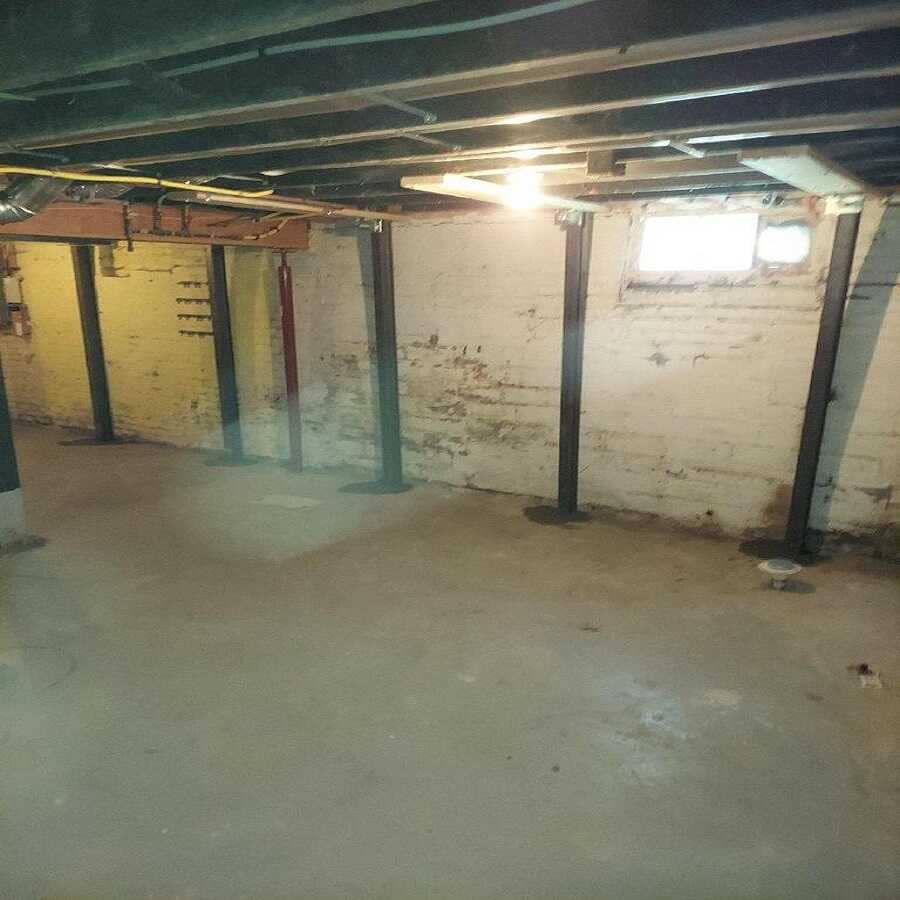All about Best Basement Waterproofing
All about Best Basement Waterproofing
Blog Article
Best Basement Waterproofing Can Be Fun For Everyone
Table of ContentsRumored Buzz on Best Basement WaterproofingBest Basement Waterproofing for BeginnersGetting The Best Basement Waterproofing To WorkSome Of Best Basement WaterproofingThe 10-Minute Rule for Best Basement Waterproofing
usages excavation methods toward all-time low of the framework's foundation. includes getting rid of dampness after it has actually entered the basement. AdvantaClean's experienced professionals and service technicians will find the water resource. If wall or piece splits are existing, we will infuse polyurethane and epoxies right into the cracks and seal the compromise, avoiding additional dampness from getting in.Correct grading around the home to route wetness away from the framework. Putting up, fixing, or cleaning gutters and downspouts. Interior or exterior waterproofing with filler, sealant, and/or water resistant paint. Installing basement ventilation systems, conditioning systems, or cellar dehumidifier systems to get water out of your basement. Picking AdvantaClean's cellar waterproofing solutions is an efficient way to deal with moisture and avoid mold and mildew from jeopardizing the structure of your home and the wellness of your family.
If there's condensation on the outside of the aluminum foil, you have high humidity in your basement. If the aluminum foil has condensation on the inside surface area (following to the wall surface), the dirt around your house might be naturally damp from a high water table or poor dirt water drainage.
You can waterproof simply your interior wall surfaces, which might solve the trouble. Or you can waterproof your exterior walls, which is a far better bet but more expensive. Below's the scoop on the different kinds: These thick layers are cement-like. Once they dry, they adhere permanently to concrete and stonework wall surfaces.
Best Basement Waterproofing Fundamentals Explained
Concrete waterproof coatings can't be used to previously repainted surface areas; check the tag. Known as densifiers, they are suitable just for wall surfaces that haven't been repainted or secured.
You brush, roll, or spray it on much even more thickly one gallon covers just 75 square feet, not the 300 square feet typical with common paint. Water resistant paint is great for DIY application. You can use it over repainted surface areas, and paint over it once it's treated (one gallon expenses $37).
It can cost $10,000 to $15,000, depending upon the work needed. Outside waterproofing entails digging deep into around your house fully deepness of the structure walls, after that installing a water-proof Website covering or membrane layer topped by drainage panels. The panels provide an easy course for water to move to an outside French drain at the end of your structure.
Some Known Details About Best Basement Waterproofing
A cellar without waterproofing is kind of like that. Your basement does not want to go through a rainstorm without correct security just as much as you do not want to.
Outside waterproofing is a waterproofing method that includes sealing your home from the exterior. The foundation wall surfaces are after that cleaned up, secured, and covered with a water-proof membrane or sealer.

The 9-Minute Rule for Best Basement Waterproofing
It's a more engaged process that needs digging up your backyard, which is pricey and time-consuming. Outside waterproofing involves eliminating whatever surrounding your Check Out Your URL house, including verandas, driveways, pathways, landscape design, air conditioning devices, decks, and more. If any one of the job was done improperly and water is still entering your basement, there isn't much you can do to remedy or fix it.
Inside basement waterproofing involves waterproofing from the inside. Any water that leaks into your basement is redirected before it touches your floor.
It's a reliable approach to water resistant your basement. The disadvantage of indoor cellar waterproofing mostly involves the installation procedure. This approach needs saved items, furnishings, and built-in shelving or closets to be relocated from touching the basement walls. And throughout setup, your basement can not be used. The largest distinction between the two methods is this: Exterior waterproofing is a preventative option and indoor waterproofing is a restorative remedy.
The Buzz on Best Basement Waterproofing
Finally, exterior and indoor cellar official site waterproofing are both reliable techniques of shielding your home from water damages. Outside waterproofing creates an obstacle that protects against water from entering your home, while interior waterproofing reroutes water that does enter your home. And it is necessary to note that outside waterproofing is a pricey and turbulent installation process when compared to interior waterproofing.
Whichever method you select, make certain you choose a reputable and reliable specialist for the job. If you have any questions regarding cellar waterproofing, please reach out to us.
You can load out our form below. Best Basement Waterproofing, begin a conversation in the bottom right-hand corner, or call us at 1-800-827-0702
Report this page